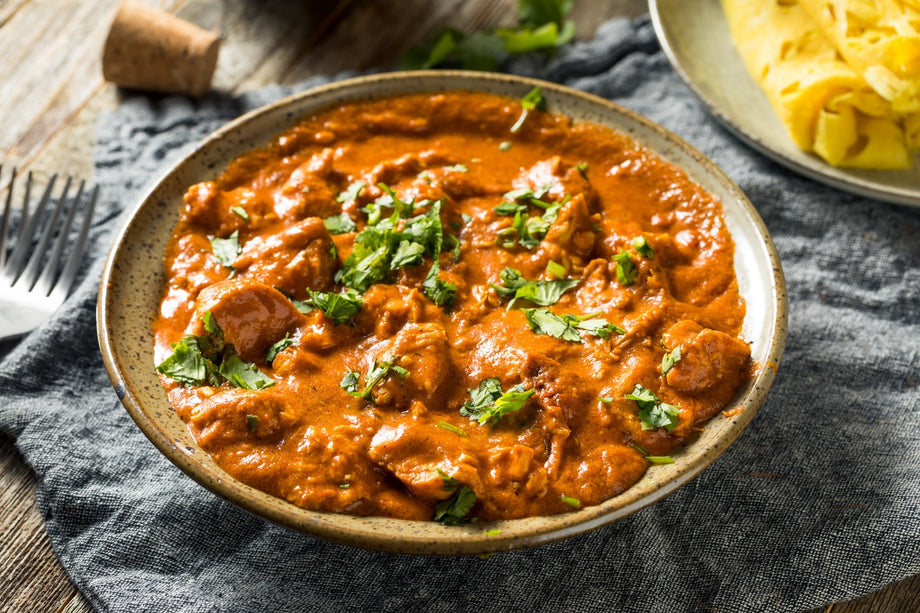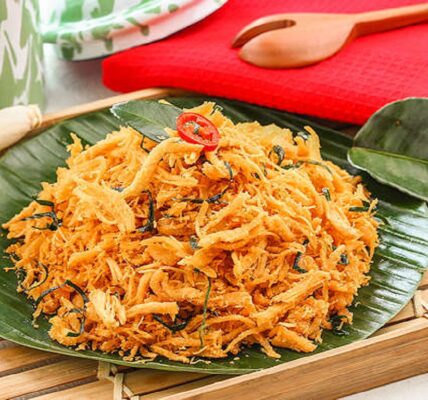to Chicken Masala
Contents
- 0.1 to Chicken Masala
- 0.2 Origins and Cultural Significance
- 0.3 Farming: The Foundation of Flavor
- 0.4 Harvesting and Preparation of Ingredients
- 0.5
- 0.6 Culinary Techniques in Modern Kitchens
- 0.7 Fusion and Innovation in Global Cuisines
- 0.8 The Dining Experience and Cultural Exchange
- 0.9 More Than Just a Dish
- 0.10 Sustainability and Ethical Considerations in Chicken Masala Production
- 0.11 Technological Advances Enhancing Traditional Recipes
- 0.12 The Role of Chefs and Restaurants in Popularizing Chicken Masala
- 0.13
- 0.14 Nutritional Aspects of Chicken Masala
- 0.15 Cultural Festivals and Food Fairs: Celebrating Chicken Masala
- 0.16 The Global Impact of Chicken Masala
- 0.17 The Enduring Legacy of Chicken Masala
- 0.18 Educational Outreach and Culinary Training
- 0.19 Media Influence on the Popularity of Chicken Masala
- 0.20 The Economic Impact of Chicken Masala
- 0.21 Sustainability Challenges and Innovations
- 0.22
- 0.23 Chicken Masala in the Arts and Popular Culture
- 0.24 Looking Forward: The Future of Chicken Masala
- 1 Author
Chicken Masala, a beloved dish with deep roots in Indian cuisine, has captivated taste buds around the world with its rich blend of spices and tender chicken pieces. This dish is not just a meal; it represents a journey from farm to table, incorporating various cultural elements and culinary techniques. As we explore its path, we witness the integration of traditional practices and modern culinary innovations.
Origins and Cultural Significance
The story of Chicken Masala begins in the rural farms of India, where the key ingredients like chicken, tomatoes, and various herbs and spices are cultivated. Originally derived from traditional Mughlai cuisine, this dish has evolved significantly over the centuries. It incorporates spices such as turmeric, cumin, coriander, and garam masala, each adding depth and flavor. These spices are not only pivotal for their taste but also for their health benefits, including anti-inflammatory properties and digestive aids.
Farming: The Foundation of Flavor
The journey starts on local farms, where farmers raise chickens in a humane environment, ensuring they are healthy and free from harmful additives. These farms often employ traditional methods that emphasize natural growth and ecological balance. Simultaneously, spice farmers dedicate their efforts to cultivating high-quality spices using techniques passed down through generations. The quality of these ingredients is crucial, as they form the backbone of Chicken Masala’s authentic flavor.
Harvesting and Preparation of Ingredients
Once the chickens reach maturity, they are carefully processed to preserve their flavor and nutritional value. Similarly, spice farmers harvest their crops at peak maturity to ensure maximum potency. These spices undergo drying and grinding processes, which are critical to releasing their aromatic oils and flavors. This meticulous preparation sets the stage for the creation of an exceptional Chicken Masala.
Culinary Techniques in Modern Kitchens
Transitioning from farm to kitchen, chefs play a crucial role in transforming raw ingredients into the aromatic and savory dish known as Chicken Masala. Modern culinary techniques have refined the process without compromising the dish’s traditional essence. Chefs marinate the chicken in a mixture of yogurt and spices, a technique that tenderizes the meat and infuses it with flavors. The cooking process involves sautéing onions and tomatoes to form a rich base, followed by adding the marinated chicken and simmering it until perfectly cooked.
Fusion and Innovation in Global Cuisines
As Chicken Masala traveled beyond India’s borders, it adapted to various tastes and dietary preferences, showcasing its versatility. International chefs have experimented with the recipe, incorporating fiatogel local ingredients and cooking styles. This fusion has resulted in a global appreciation of the dish, making it a staple in many international restaurants. Moreover, contemporary health trends have influenced the preparation of Chicken Masala, with adaptations like low-fat versions using leaner cuts of chicken or vegan variants employing plant-based substitutes.
The Dining Experience and Cultural Exchange
The final stage in the journey of Chicken Masala is the dining experience, which goes beyond mere consumption. It involves a cultural exchange where people learn about the dish’s history and its significance in Indian cuisine. Restaurants specializing in Indian food often decorate in a style that reflects Indian traditions, enhancing the dining experience with cultural richness. This aspect of dining turns a simple meal into an immersive cultural exploration.
More Than Just a Dish
Chicken Masala’s journey from farm to table exemplifies how a simple dish can embody a blend of tradition, flavor, and innovation. It represents a bridge between cultures, a testament to the power of culinary fusion that respects origins while embracing global influences. As Chicken Masala continues to evolve, it remains a symbol of how food can bring people together, offering a taste of India’s culinary heritage to the world.
Sustainability and Ethical Considerations in Chicken Masala Production
As Chicken Masala gains popularity worldwide, sustainability and ethical considerations become increasingly crucial. Ethical farming practices are not just beneficial for the animals but also enhance the quality of the final dish. Consumers are more conscious than ever about where their food comes from, favoring products that guarantee humane treatment of livestock and environmentally friendly farming techniques. Producers and chefs alike are responding by sourcing ingredients from responsible farms and advocating for organic and non-GMO spices, ensuring that the dish’s integrity remains intact while also supporting sustainable agricultural practices.
Technological Advances Enhancing Traditional Recipes
In the modern era, technology plays a significant role in the culinary world, influencing how traditional dishes like Chicken Masala are prepared and enjoyed. Innovations in cooking appliances, such as programmable pressure cookers and advanced ovens, allow for more precise cooking temperatures and times, which can enhance the dish’s flavor and texture. Additionally, technology in agriculture, including hydroponics and vertical farming, is starting to impact how ingredients are grown, making it possible to cultivate spices and vegetables in non-traditional settings. This accessibility can lead to fresher ingredients and a more sustainable cultivation model.
The Role of Chefs and Restaurants in Popularizing Chicken Masala
Chefs and restaurateurs play a pivotal role in the journey of Chicken Masala from a regional specialty to a global favorite. By incorporating this dish into their menus, they expose diverse audiences to its rich flavors and storied history. Culinary professionals often take creative liberties with the recipe, tailoring it to local palates and available ingredients, which can lead to unique and innovative versions while still respecting the dish’s origins. Additionally, cooking shows and online food content have made recipes like Chicken Masala more accessible, encouraging home cooks to experiment with making the dish themselves, further solidifying its place in global cuisine.
Nutritional Aspects of Chicken Masala
Health-conscious consumers today are interested not only in flavor but also in the nutritional content of their meals. Chicken Masala, with its combination of lean protein from chicken and metabolism-boosting spices, offers numerous health benefits. Turmeric, a key ingredient, contains curcumin, known for its anti-inflammatory properties, while cumin can aid in digestion and improve immunity. By making slight adjustments, such as using less oil or incorporating more vegetables, chefs can make Chicken Masala a nutritious part of a balanced diet.
Cultural Festivals and Food Fairs: Celebrating Chicken Masala
Chicken Masala is not just a meal; it’s a cultural symbol celebrated in various festivals and food fairs around the world. These events serve as platforms for culinary exchange and provide an opportunity for people to experience traditional Indian cooking techniques and presentations firsthand. Food festivals also allow chefs to showcase their culinary skills and reinterpret traditional dishes, creating a deeper appreciation for the cultural heritage embedded in recipes like Chicken Masala.
The Global Impact of Chicken Masala
The global journey of Chicken Masala highlights the power of cuisine to cross borders and connect cultures. It has become a culinary ambassador, introducing people worldwide to Indian culture through their taste buds. The dish’s adaptability and appeal have made it a favorite in households and restaurants across the globe, proving that food can be a universal language that brings diverse communities together.
The Enduring Legacy of Chicken Masala
In conclusion, the journey of Chicken Masala from a traditional Indian dish to a staple of global cuisine illustrates the dynamic interplay between tradition and innovation. Through the dedication of farmers, chefs, and culinary enthusiasts, this dish continues to evolve while maintaining its roots. Chicken Masala is more than just a culinary delight—it’s a testament to the enduring power of food to transcend cultural boundaries, connect communities, and enrich our global dining experience. As it continues to evolve and adapt, Chicken Masala remains a cherished dish in the world of modern cuisine, promising to inspire and satisfy future generations with its rich flavors and cultural significance.
Educational Outreach and Culinary Training
As Chicken Masala continues to enchant palates globally, educational institutions and culinary schools are increasingly incorporating it into their curricula. This inclusion serves not only to educate aspiring chefs about diverse culinary traditions but also to preserve and transmit the rich heritage of Indian cuisine. Through workshops, cooking classes, and specialized courses, students learn the intricate balance of spices and techniques required to master Chicken Masala, ensuring that these traditional methods are not lost to future generations. Moreover, these programs often emphasize the historical and cultural contexts of the dishes they teach, providing a comprehensive culinary education that respects the origins and evolutions of global cuisines.
Media Influence on the Popularity of Chicken Masala
The role of media cannot be overstated in the rise of Chicken Masala’s popularity. Food bloggers, culinary influencers, and television chefs have brought this flavorful dish into the spotlight, often featuring it in cooking shows, online tutorials, and social media posts. This exposure has not only boosted its popularity but also demystified Indian cooking for a global audience, making it more accessible to home cooks of all skill levels. The media’s portrayal of Chicken Masala often highlights both its simplicity and its adaptability, encouraging viewers to try their hand at this versatile dish, which can be adapted to suit a wide range of dietary preferences and taste profiles.
The Economic Impact of Chicken Masala
On a larger scale, the popularity of Chicken Masala has significant economic implications. For regions where spice cultivation is a major industry, the global demand for spices used in Chicken Masala can lead to increased economic prosperity. This demand boosts local economies through agriculture, providing jobs and supporting small-scale farmers who grow spices and herbs. Additionally, as Chicken Masala becomes a menu staple worldwide, it drives revenue for restaurants and food service businesses, contributing to the growth of the culinary industry at large.
Sustainability Challenges and Innovations
While the global love for Chicken Masala brings many benefits, it also poses sustainability challenges, particularly in terms of spice production and meat consumption. To address these issues, many in the industry are turning to innovative solutions such as regenerative agriculture to grow spices in a way that enhances soil health and biodiversity. Similarly, advances in lab-grown meats and plant-based protein alternatives offer possibilities for making Chicken Masala more environmentally friendly without compromising on taste or tradition.
Chicken Masala in the Arts and Popular Culture
Chicken Masala has transcended its role as merely a dish to become a cultural icon, featured in films, literature, and art that explore themes of identity, migration, and cross-cultural exchange. It often serves as a symbol of home for diaspora communities, representing a link to their cultural heritage amidst new environments. This portrayal helps to foster a deeper understanding and appreciation of Indian culture, making Chicken Masala more than just food—it becomes a story of family, tradition, and the comforts of home, no matter where one might be in the world.
Looking Forward: The Future of Chicken Masala
As we look to the future, Chicken Masala is poised to continue its journey as a beloved global dish. With ongoing innovations in cooking technology, sustainable agriculture, and nutritional science, this dish is likely to evolve in ways that we can currently only imagine. What remains constant, however, is its ability to bring people together over shared meals and shared stories. The story of Chicken Masala is far from complete, as each generation adds its chapter, whether through new cooking techniques, fusion dishes, or simply by passing the recipe down through family lines. In every iteration, Chicken Masala remains a testament to the enduring appeal of flavorful, well-crafted cuisine.
In summary, Chicken Masala not only fills the stomach but also warms the heart and educates the mind. Its journey from a simple farmhouse in India to a beloved dish in the global culinary scene highlights the profound ways food can connect us, teach us, and inspire us. As it continues to adapt and grow, Chicken Masala undoubtedly holds a place at the global table for generations to come, inviting everyone to savor its rich flavors and compelling history.
Also read this article: Ripple Effects: Understanding Impact Actions Greater Change





















